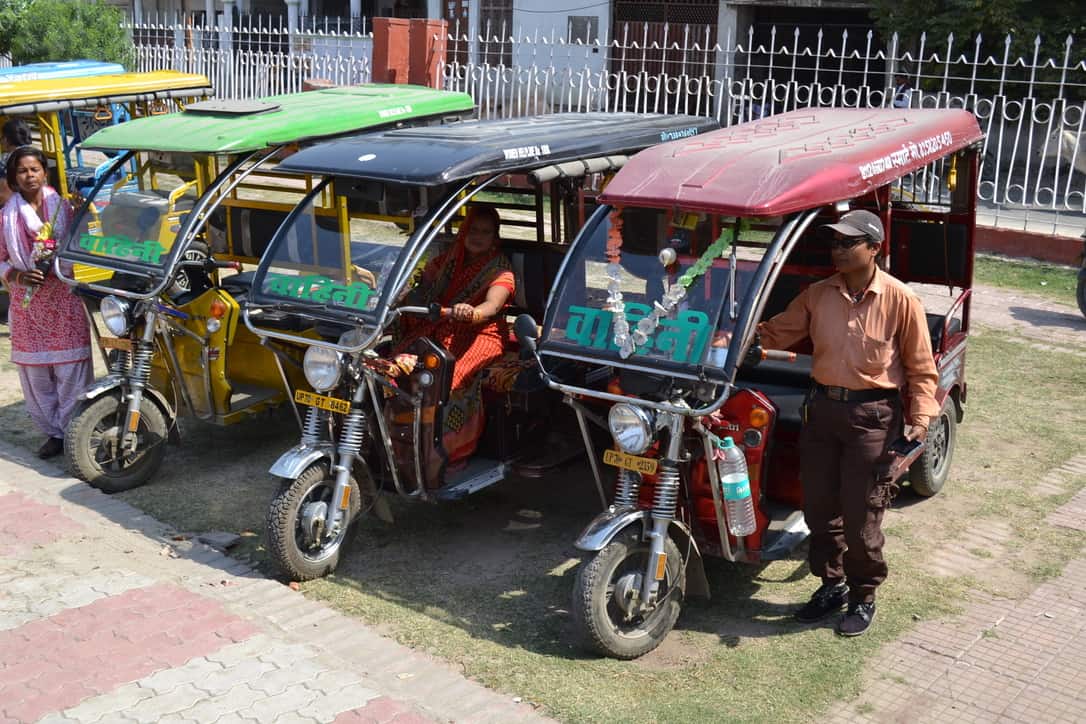As world leaders gather for this week’s seaside summit in Cornwall, calls for climate action will pound them like waves crashing on a harbour wall. The climate crisis grows bigger every day, but one response can help keep our hopes for a low-carbon future afloat: Investing in green jobs and skills in less wealthy nations.
This would build thriving low-carbon economies, and could offer new opportunities for marginalised groups – such as women and young people – too.
So it’s time for rich nations to come good on a promise made in 2010, that from 2020 they would provide $100 billion a year to developing countries to fight the climate crisis. Climate commitments often fall apart under scrutiny, and we cannot be sure this promise has been kept.
We do know that when the G7 finance ministers met on 5-6 June, they recommitted to “increase and improve our climate finance contributions through to 2025”, without agreeing numbers. But this is not good enough.
A rapid strategy to deliver $100 billion a year based on the needs of the recipient countries is needed now – and a strong focus on skills and better work is essential.
This could tap into surging demand for solar energy, accelerate the spread of sustainable buildings and transport, and enable people to move away from environmentally damaging work such as charcoal production, fossil fuel extraction and unsustainable farming. These areas are fundamental to a global low-carbon transition.
Support for skills and training in a wide range of areas is essential. This revolution will need engineers and technicians, but also salespeople, digital banking experts, IT professionals, customer support staff and many others. From India to Kenya, innovative organisations are already equipping people for these jobs. But their work must be scaled up fast.
Three inspiring examples
Innovations that would enable the shift from fossil fuels to clean energy are possible, proven and ready to be scaled – and bring with them better work, improved healthcare and greater gender equality.
In Yemen, the United Nations Development Programme has helped people in off-grid communities set up solar microgrids, serving local homes and businesses. After initial training from UNDP and its partners, local people pooled cash grants from the organisation to buy equipment and establish businesses selling energy to their neighbours.
The microgrids now create a monthly income of up to $70 for local entrepreneurs, and cheaper and more reliable energy for their neighbours. One grid in the Abs district is owned and run entirely by women – inspiring a change in local attitudes to gender and work.

Bold national programmes create work opportunities too. In Togo, the government has set out to tackle low levels of electrification – just 8% for rural areas in 2017. Their response was a clever partnership with businesses aiming to bring clean and affordable energy to all families, backed by subsidies for the poorest. Investment in skills was an important part of this work, with thousands of local people trained as technicians, or as banking agents ready to support ‘pay as you go’ solar products, and women encouraged to train as engineers.

In northern India, SMV Green is driving the spread of electric rickshaws – reducing the air pollution that kills thousands every year. The company is creating fair working conditions, helping drivers from deprived neighbourhoods take out affordable loans that let them buy their vehicles outright. This means they are not constantly weighed down by high rental charges.
SMV’s radical Vahini programme is training India’s first women rickshaw drivers, creating secure incomes for them and improving safety and security for their female passengers. The company is on the road to success, with well over 100 million passenger journeys completed so far.

These three examples show the power of climate solutions. However, developing countries are still waiting for rapid and significant investment in such innovation. 2021 is a critical year for climate leadership.
The G7 summit is a unique chance to demonstrate what a collective commitment to the fight against climate change can look like –and build momentum for more breakthroughs at COP26 in November. It can be the bedrock on which trust is built for these pivotal climate talks at the end of the year.
The G7 must show leadership, get their $100 billion a year pledge back on track, and stand alongside low-income countries in their fight against climate change.
Discover outstanding organisations delivering better work and green skills on the 2021 Ashden Awards longlist.

